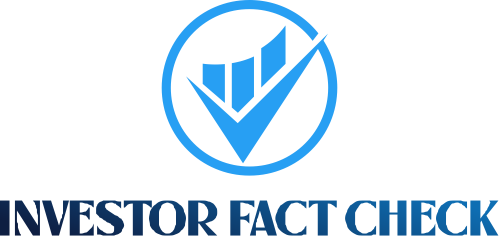Key Takeaways
- The Fed lowered its benchmark rate this week, but mortgage refinance rates jumped instead.
- Mortgage rates tend to follow the 10-year Treasury yield, not the Fed’s short-term rate, which is why they can move in opposite directions.
- Refinancing may still make sense if your mortgage rate is in the high 7% to 8% range, so you can cut monthly payments by hundreds of dollars.
- Refinancing rarely pays off if the rate gap is small, if you plan to move soon, or if you’re near the end of your loan term.
The full article continues below these offers from our partners.
Now That the Fed Has Cut Rates, Are Refinance Rates Headed Lower Too?
At first glance, you’d expect the Federal Reserve’s decision on Wednesday to push mortgage and refinance rates lower. The central bank cut its key rate by a quarter point—its first cut this year—and many policymakers see more cuts coming later this fall.
But the last few days have told a very different story. Refinance rates, which had touched an 11-month low earlier this month, have surged in the wake of the Fed’s move. The average 30-year refinance rate climbed from 6.61% on Tuesday to 6.81% by Thursday. And on Friday, they are moving higher still, hitting 6.82% at the time of this writing.
Why the disconnect? Mortgage rates don’t necessarily move with the Fed’s benchmark, because the federal funds rate is a short-term measure while mortgages are long-term loans. In fact, mortgage rates similarly surged after three consecutive Fed cuts last year.
Mortgage rates more generally track the 10-year Treasury yield, which has spiked in recent days. A key reason is that markets are uncertain about whether the Fed will actually deliver more cuts. Fed Chair Jerome Powell made clear there are no guarantees—and that uncertainty is pushing Treasury yields and mortgage rates higher.
The past three days are a clear reminder that Federal Reserve policy and mortgage rates don’t always move together. A rate cut can just as easily coincide with higher refinancing costs—as homeowners are now seeing in real time.
When Refinancing Makes Sense
Even with mortgage rates climbing this week, refinancing can still be worthwhile for some homeowners. The key is whether today’s rates are low enough compared with your current loan to offset the costs of refinancing.
Homeowners carrying mortgages in the high 7% to 8% range may still come out ahead. “Ideally, a borrower saving 1 percentage point in rate and/or triple-digits in monthly payment is [best off] when comparing one 30-year fixed rate term to another,” said Christopher Carter, vice president and sales manager at Univest Home Loans. “Or, a customer who can recoup their refinancing costs in less than 24 months also works well.”
Real-world results vary, though. Carter said he’s had clients who walked away from refinance savings of more than $600 a month because they were holding out for $1,000—while others were happy to lock in just $75 a month in lower costs because it fit their budgets.
| Refinance Savings from a 1% Rate Drop | |||||
|---|---|---|---|---|---|
| Rate | $300,000 Loan Amount |
$400,000 Loan Amount | $500,000 Loan Amount | $600,000 Loan Amount | |
| Monthly payment at 7.81% rate | 7.87% | $2,162 | $2,882 | $3,603 | $4,323 |
| Monthly payment at 6.81% refi rate | 6.87% | $1,958 | $2,610 | $3,263 | $3,916 |
| Monthly savings | – $204 | – $272 | – $340 | – $407 | |
| Annual savings | -$2,448 | -$3,264 | -$4,080 | -$4,884 | |
Refinancing also isn’t just about lowering your rate. “Switching from a variable rate loan to a fixed term, eliminating private mortgage insurance, or shortening your mortgage to 20 or 15 years can all be beneficial,” Carter said. “Even if the new rate is close to your current rate, those changes may still improve your long-term finances.”
What about cash-out refinancing?
A cash-out refinance lets you tap your home equity by taking out a larger mortgage and receiving the difference as cash. The funds can be used for renovations, debt consolidation, or other major expenses, but this strategy also comes with added costs and risks.
When Refinancing Doesn’t Pay Off
Of course, refinancing isn’t always the right move. If the gap between your current rate and today’s refi rate is small, fees can eat up any potential savings. It also rarely makes sense if you plan to move within a few years or if your loan is nearly paid off. In those cases, the break-even math usually doesn’t work.
“The most important questions are: What’s my projected savings? How much am I spending to refinance? And how long will it take me to break even?” Carter said.
Timing can also be tricky. “Rates can always go lower, but they can go higher too—and they usually go up faster than they come down,” Carter said. He pointed to this month’s Fed meeting as an example, as many borrowers waited for rates to fall further after the central bank’s cut. But instead, rates jumped almost immediately.
The bottom line: Refinancing can be a smart financial move, but only if the numbers add up for your situation. Running the math—and locking in when you hit your target—is more reliable than trying to time the market.
Today’s Mortgage Rate News
We cover new purchase and refinance mortgage rates every business day. Find our latest rate reports here:
How We Track the Best Mortgage Rates
The national and state averages cited above are provided as is via the Zillow Mortgage API, assuming a loan-to-value (LTV) ratio of 80% (i.e., a down payment of at least 20%) and an applicant credit score in the 680–739 range. The resulting rates represent what borrowers should expect when receiving quotes from lenders based on their qualifications, which may vary from advertised teaser rates. © Zillow, Inc., 2025. Use is subject to the Zillow Terms of Use.





